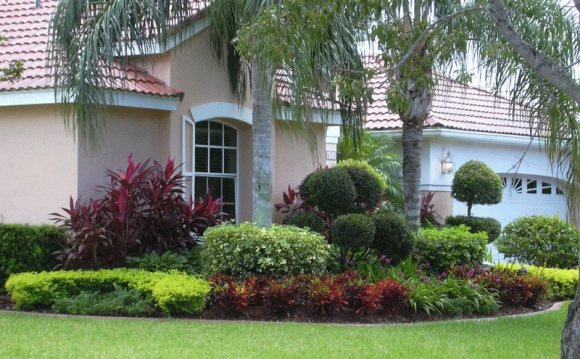
With its dense foliage of medium-green, deeply lobed leaves, fullmoon maple (Acer japonicum) adds a lot of texture to the landscape; fall color is usually brilliant red, red-orange or orange-yellow, depending on the cultivar. Maturing to a height of about 20 to 30 feet, it can be grown as either a small tree or large shrub. Smaller cultivars are available. Fullmoon maple is native to Japan, a cousin to the commonly named Japanese maple that's actually Acer palmatum. Not heat-tolerant; USDA Zones 5 to 7
Crape Myrtle
The mid- to late-summer flowers — when few other shrubs or trees are blooming — is one of crape myrtle's best features. Its bark, shown off on a multi-trunked form, varies from creamy white to gray to sandy brown to cinnamon, depending on the species and cultivar. Lagerstroemia sp. comes in a wide range of sizes, from dwarf (a few feet tall) to the typical tree, which averages 20 to 30 feet tall. Flowers can be pink, lavender, rose, almost-red and white. USDA Zones (6) 7 to 9
Amur Maple
A lovely little tree with a wide-spreading canopy, the amur maple (Amur ginnala) can either be a large shrub or a small tree, but it's more often limbed up to show off its strong sculptural form. One of the first maples to leaf out in the spring, the amur maple later offers reddish winged fruits (samara). Mature size is usually 15 to 18 feet high and wide. USDA Zones 3 to 8
Dwarf Poinciana Tree
Also called Mexican bird-of-paradise, the dwarf poinciana (Caesalpinia pulcherrima) blooms from spring to early winter. In Florida, this plant can grow to a 10- to 20-foot tree; in drier climates, it's usually a shrub up to 10 feet tall. Prune in early to mid-fall, removing only 18 to 24 inches of growth; this will get rid of the seedpods and rejuvenate the tree for its next season of flowering. USDA Zone 9a
Fringetree
In midspring, the fringetree earns its name with fleecy clouds of white flowers. There are two main types, the Chinese fringetree (USDA Zones 6 to 8) and white fringetree (USDA Zones 4 to 9), with lots of variety within each species. Both types, especially Chinese fringetree, tolerate a wide range of soils.
Paperbark Maple
From your chair on the patio, you'll enjoy the exfoliating cinnamon-colored bark of the paperbark maple (Acer griseum). This undemanding tree tolerates both acid and alkaline soils, requiring only that the site be well-drained. Mature height is 20 to 35 feet tall and wide, but often less in width. USDA Zones 4 to 8
Kousa Dogwood
Kousa dogwood (Cornus kousa) produces its flowers (actually, bracts) after the leaves have appeared, which puts its bloom period a few weeks later in spring than flowering dogwood (C. florida), and the flowers seem to hold for weeks. Even better: Kousa dogwood has much better disease resistance, while C. florida's is susceptible to anthracnose. Kousa dogwood typically grows 20 to 30 feet high and wide but, as it ages, often gets wider than its height. USDA Zones 5 to 8. The beloved flowering dogwood continues to be the target of intense research. Cultivars thought to be resistant to anthracnose are trickling into the market.
Japanese Maple
The Japanese maple is one of the classiest trees around, whether it's the weeping threadleaf form that typically creates a broad mound or the upright form that makes a small shade tree. Typical size of the mature tree is 15 to 30 feet tall and wide. USDA Zones 5 to 8
Washington Hawthorne
White flowers in late spring, a beautiful canopy of dark green leaves that turn red and orange in the fall, and bright red berries that hang on the tree deep into winter — you can't ask for a nicer tree of any size. You can forgive it for having thorns, but its prickly nature means that pruning has to be done with gloves. Mature size of the Washington hawthorne (Crataegus phaenopyrum) is 25 to 30 feet tall and somewhat less wide (20 to 25 feet). USDA Zones (3)4 to 8















